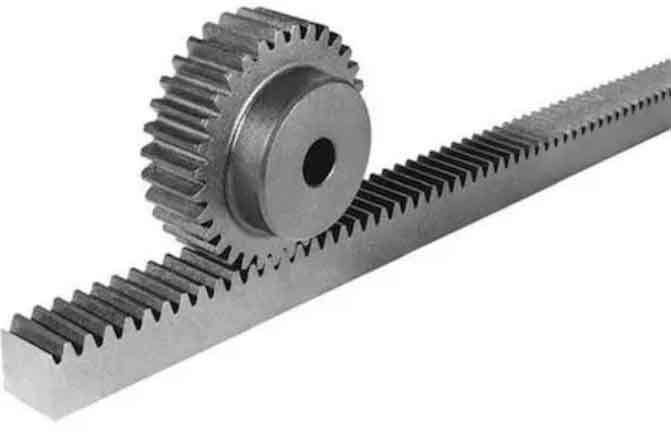
Rack and pinion gears offer several advantages in robotics and automation applications, making them a popular choice for linear motion systems in these fields. Here are the key advantages of using rack and pinion gears in robotics and automation:
1. Precise Linear Motion:
Rack and pinion gears provide accurate and controlled linear motion. The meshing of the gear teeth ensures a smooth and consistent movement, allowing robots and automated systems to achieve precise positioning and repeatability in their operations.
2. High Efficiency:
Rack and pinion gears have high mechanical efficiency, translating most of the input power into linear motion. Their tooth engagement ensures minimal power losses, making them energy-efficient and suitable for applications where power conservation is essential.
3. Compact Design:
The linear motion in rack and pinion systems occurs along a single axis, resulting in a compact and space-saving design. This is particularly advantageous in robotics and automation, where space constraints are common, and compact components are desirable for efficient integration.
4. Low Backlash:
Rack and pinion gears can be designed to have minimal backlash, which is the play or clearance between gear teeth. Low backlash ensures accurate motion control and reduces the possibility of positioning errors or vibration during robot operations.
5. High Load-Carrying Capacity:
Rack and pinion gears can handle significant loads, making them suitable for various robotics and automation tasks that involve moving heavy objects or applying force in industrial settings.
6. Easy to Implement and Control:
Rack and pinion systems are relatively simple in design and easy to implement in robotics and automation setups. They can be coupled with various actuators, such as motors and servos, and controlled using standard motion control techniques.
7. Quiet Operation:
Well-designed rack and pinion gear systems exhibit smooth and quiet operation due to their gradual tooth engagement. In noise-sensitive environments or applications where reduced noise is preferred, rack and pinion gears are advantageous.
8. Durability and Longevity:
Properly designed rack and pinion gear systems, with suitable materials and heat treatment, exhibit excellent durability and wear resistance. This ensures a longer service life, reduced maintenance requirements, and improved reliability for robotic and automated systems.
9. Flexibility and Customization:
Rack and pinion gears can be customized to suit specific robotic and automation applications. Designers can adjust gear parameters, such as tooth profile, module, pitch, and length, to match the requirements of the system, allowing for flexibility in design.
10. Wide Range of Applications:
Rack and pinion gears are versatile and find applications in various robotics and automation tasks, such as pick-and-place operations, assembly lines, material handling, CNC machines, 3D printers, and more.
In conclusion, rack and pinion gears offer numerous advantages that make them well-suited for robotics and automation applications. Their precise linear motion, high efficiency, compact design, and low backlash characteristics contribute to improved performance, accuracy, and reliability in automated systems. Whether in industrial automation or advanced robotic applications, rack and pinion gears play a significant role in enabling efficient and controlled linear motion, enhancing the capabilities of modern automation technology.
